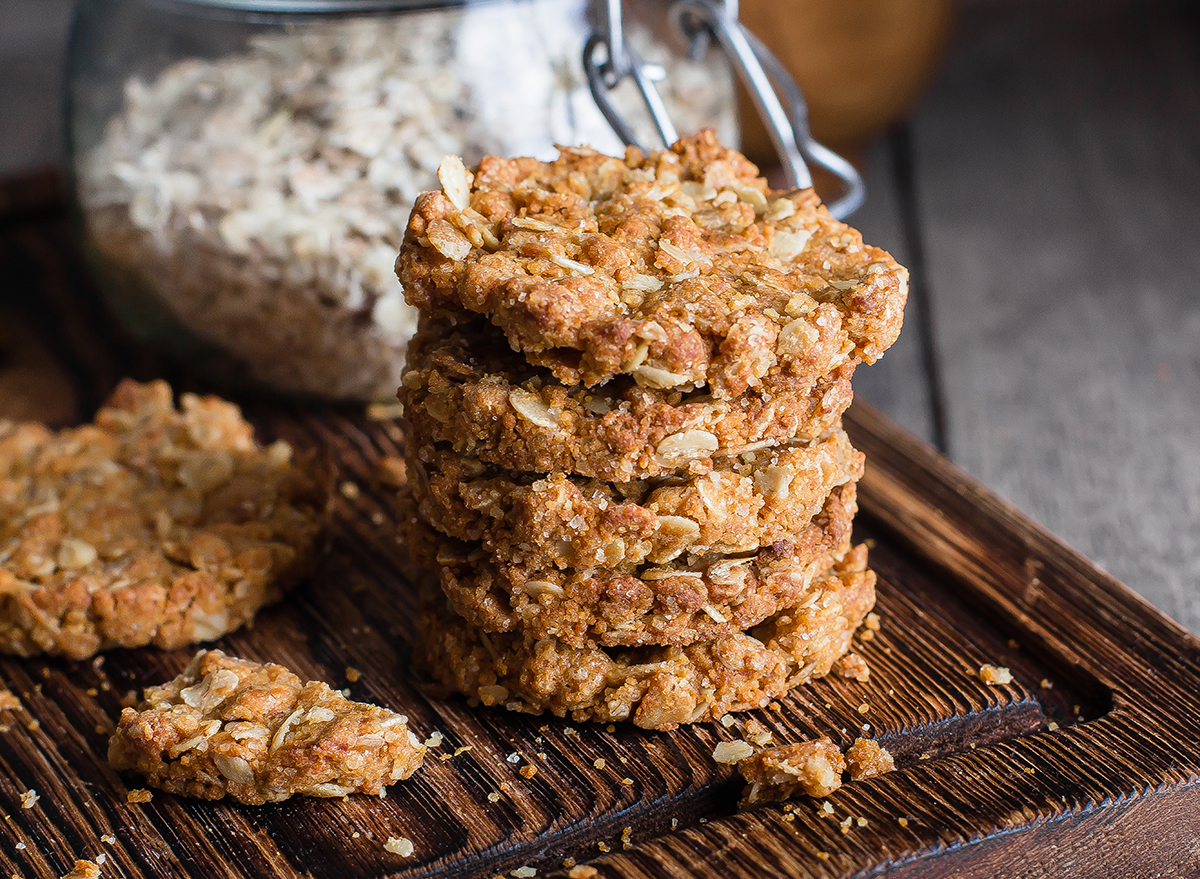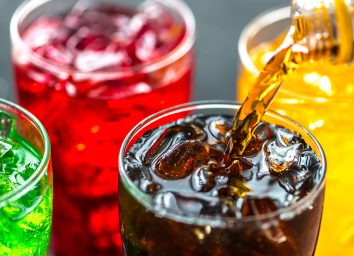The Secret Reason Why You May Choose Unhealthy Foods Over Healthy Ones

What if we told you the reason why you may not prefer something like a Larabar—chewy, health-conscious snacks made primarily from dried fruit and nuts—may not have so much to do with the overall flavor but rather the texture based on appearance?
Foods that are labeled (or even described) as having an "earthy" flavor or containing "raw" ingredients can be off-putting to people, especially those whose taste buds aren't trained to enjoy healthier foods. A recent study published in Food Quality and Preference sheds light on another factor that potentially sways people's decision-making when it comes to choosing a healthier food item over one that's not as healthy: perception of texture.
Consumer psychologist Dr. Cathrine Jansson-Boyd of Anglia Ruskin University spearheaded the research, which involved 88 people rating six different kinds of oat biscuits on the following criteria:
- healthiness
- tastiness
- crunchiness
- pleasantness
- likelihood of purchase based only on visual appearance
This study focused solely on how a food product can be perceived differently just by the way it looks. And texture played a huge part in how these biscuits came across. (It's worth noting here that in the U.K., where the university is based, what Americans would call "cookies" are referred to as "biscuits." So these were likely closer to oatmeal cookies than Southern-style biscuits.)
Oat biscuits were selected for this study because they're seen as both healthy (on account of the oats) and unhealthy (on account of it being a biscuit). The general consensus among participants was that the biscuits with a visibly pronounced texture were perceived as healthier and, therefore, less desirable.
The opposite was thought of the biscuits with visibly less explicit textures, which were perceived as tastier, crunchier, and more likely to be purchased at the store. Essentially, the biscuits people thought were tasty—solely based on looks, remember—were not as healthy as the ones with more pronounced textures, which means the healthier biscuit options weren't nearly as desirable to participants.
In short, this study revealed that a food product with a healthy-looking texture ultimately gives the consumer the impression that it's not going to taste as good. Dr. Jansson-Boyd believes the findings from this study can potentially enable food manufacturers to design healthier food products that are less bumpy and, instead, smoother.
"A sweet item, such as a biscuit, benefits from having an appearance as being less healthy as that increases the perception of tastiness and increases the likelihood of purchase. To guide healthier purchasing decisions, food producers can, therefore, look to use non-healthy looking, smoother textures to overcome this perception that healthy is not tasty," she said.
But is that really the answer here? Should companies like Larabar, with its noticeable chunks of nuts and bits of dried fruit, make their products smoother to increase its perception of being tastier?
Cynthia Sass, RD, CSSD, LA-based performance nutritionist says there are two kinds of people: health seekers and taste seekers.
"I find that health seekers are willing to try new or alternative versions of foods because they want to be healthier, and most come to enjoy the taste of the better-for-you versions," she says. "In fact, many say when they go back to a traditional processed version they find it unappealing, unsatisfying, and seemingly fake or 'chemical tasting.'"
On the contrary, taste seekers, which we can likely infer made up the majority of the participants in this study, allow the taste to be the driving factor in making food choices. So if these types of consumers purchase foods that don't have the typical "healthy" appearance but are in fact nutritionally-dense, they may not identify the connection between their choices and the health benefits.
But instead of tricking these taste-seeking consumers, the answer might be the opposite. If companies can encourage consumers to make a conscious shift away from taste being the pivotal deciding factor, they may be willing to try healthier foods.
"Ideally, the goal is to move more people from the taste-seeking to [the] health-seeking lane and then introduce foods that deliver on both," says Sass. And for more weird science, check out The Science Behind Why Some People Can't Stand Cilantro.








